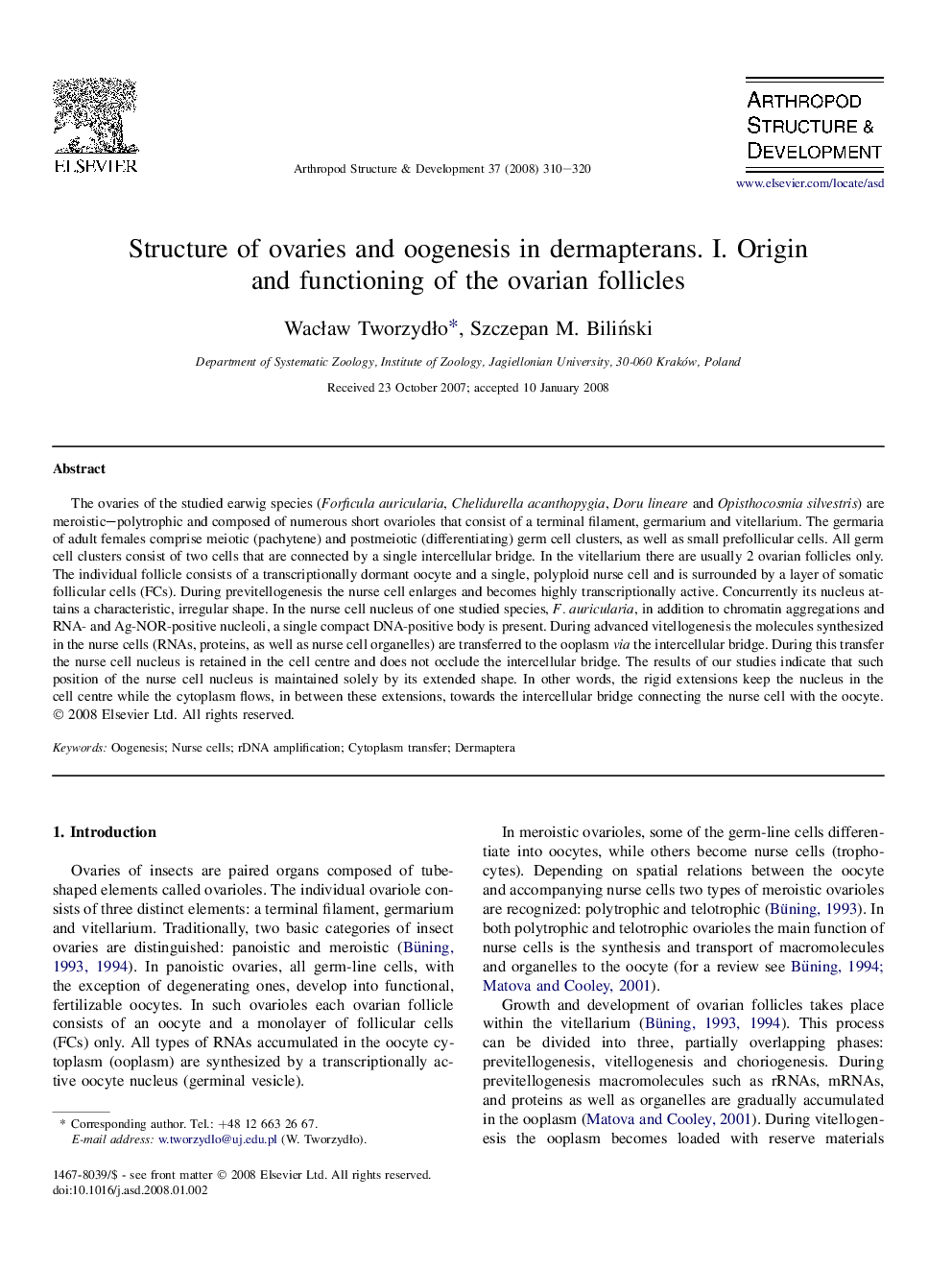| Article ID | Journal | Published Year | Pages | File Type |
|---|---|---|---|---|
| 2778940 | Arthropod Structure & Development | 2008 | 11 Pages |
The ovaries of the studied earwig species (Forficula auricularia, Chelidurella acanthopygia, Doru lineare and Opisthocosmia silvestris) are meroistic–polytrophic and composed of numerous short ovarioles that consist of a terminal filament, germarium and vitellarium. The germaria of adult females comprise meiotic (pachytene) and postmeiotic (differentiating) germ cell clusters, as well as small prefollicular cells. All germ cell clusters consist of two cells that are connected by a single intercellular bridge. In the vitellarium there are usually 2 ovarian follicles only. The individual follicle consists of a transcriptionally dormant oocyte and a single, polyploid nurse cell and is surrounded by a layer of somatic follicular cells (FCs). During previtellogenesis the nurse cell enlarges and becomes highly transcriptionally active. Concurrently its nucleus attains a characteristic, irregular shape. In the nurse cell nucleus of one studied species, F. auricularia, in addition to chromatin aggregations and RNA- and Ag-NOR-positive nucleoli, a single compact DNA-positive body is present. During advanced vitellogenesis the molecules synthesized in the nurse cells (RNAs, proteins, as well as nurse cell organelles) are transferred to the ooplasm via the intercellular bridge. During this transfer the nurse cell nucleus is retained in the cell centre and does not occlude the intercellular bridge. The results of our studies indicate that such position of the nurse cell nucleus is maintained solely by its extended shape. In other words, the rigid extensions keep the nucleus in the cell centre while the cytoplasm flows, in between these extensions, towards the intercellular bridge connecting the nurse cell with the oocyte.
